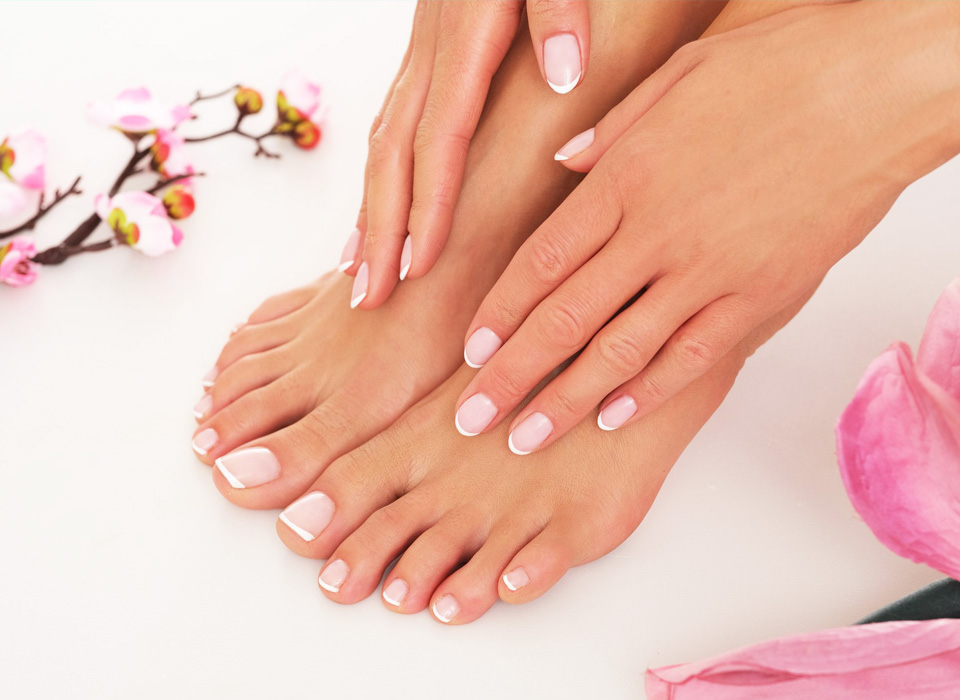Plantar Fat Pad Atrophy
The fat pad cushions the impact of the weight-bearing pressure points of the foot, allowing you to perform various activities and wear different types of footwear. Some health conditions and surgery complications can cause atrophy of the fat pad leading to painful effects. Fortunately, the latest fat pad augmentation procedures alleviate this dilemma with the restoration of a functional foot.

What is pedal fat pad & its function?
- To protect the feet’s tendons, ligaments, nerves, blood vessels, and bones.
- To serve as a mechanical anchor that helps in shifting the body weight without overwhelming connective tissue elements.
- To provide cushioning to minimize the effect of impact, friction, pressure and shear force on the foot musculature, allowing you to perform every type of activity including walking, running, or standing still.
What is fat pad atrophy?
The partial or total loss of fat pad thickness is termed as atrophy. Age-related loss of fat tissue, medications, and surgical procedures predispose an individual to such risks. As the fat pad is lost, the body weight is transmitted directly from the heel and metatarsal heads onto the skin and fascia. For example, the pressure during heel strike when we step forward is 2.5 times the body weight and the absence of cushioning can lead to inflammation and injury.
Causes:
The following are the causes of plantar fat pad atrophy:
- Aging is one of the most important causes of plantar fat pad loss. A human foot travels a distance of 100,000 miles by the age of 75 years and loses as much as half of fat pad protection on the foot by this age. With increasing age, supporting fatty tissue in the sole of the foot is reduced as adipose tissue strength is reduced in the rest of the body. Another reason for atrophy is that we spend the bulk of our time walking around on man-made surfaces like hard floors such as pavement instead of walking on natural surfaces like grass and sand. This creates a negative impact on the health of the plantar fat pad, making them more prone to injury and callus formation.
- Some anatomical shapes of the foot like high pedal arches or downward displaced metatarsal head apply direct pressure on connective tissue architecture or crush the fatty tissue located underneath.
- Traumatic falls or high jumps that land heel-first on the floor may cause the fat pad to become displaced.
- Standing for a long time in poorly designed footwear can exert significant pressure over the fat pad leading to increased wear and tear damage.
- Footpad atrophy is very common in diabetic patients and is more liable to develop neuropathy. The chances of developing pressure induced atrophic changes increases resulting in plantar fat atrophy. Studies have shown that fat pads in the diabetic foot are less pliable, stiffer, less able to regain their shape or position. This combination of damaged fat pad and neuropathy is very dangerous and can cause damage to the foot if not properly protected.
- Genetics or family history are strongly associated with excessive fat pad loss or degenerative diseases.
- Overweight people are at increased risk of developing fat pad atrophy especially if they are not careful to select well-designed footwear. Increased physical load from excessive body weight can cause the pad to lose its protective resiliency.
- Certain degenerative inflammatory changes or conditions (rheumatoid arthritis or lupus arthritis) can make the foot pad more vulnerable to damage.
- Steroid injections if used frequently can damage the fat pad.
- Footpad atrophy can also be a sequel of Morton Neuroma Surgery. Multiple surgical incisions can lead to the thinning of the plantar fat pad.
What problems can arise with fat atrophy?
The pedal fat pad is there to protect the underlying neurovascular tissues, sensitive periosteum, ligaments and tendons and a person with fat pad atrophy will develop very painful feet, a burning sensation, and tenderness in the area of atrophy. Walking barefoot will progressively become very difficult. The metatarsal heads of receptive feet appear prominent due to the loss or shift of the fat pad. Once inflammation sets in and the chances of Keratoma (benign tumor of keratin cells) formation are also increased. Bilateral centralized heel pain often occurs after prolonged periods of standing.
What are the treatment options?
The treatment can either be conventional or augmentation surgery depending on the severity of symptoms and patient profile.
Lifestyle changes:
- Wear flat shoes with padding and soft soles.
- Avoid activities that put stress on feet such as sports and athletic activities.
- Avoid walking barefoot on hard and uneven surfaces and opt for using padded socks or shoes with padding to provide cushioning and shock absorption.
- High heels can placewhole-body weight onto the forefoot, refraining from the use of such footwear can offload the pressure from the metatarsal heads.
- Use orthotic pads which reduce pressure on metatarsal bones and allows for equal distribution of weight which promotes healing and prevents callus formation.
Significant potential for the treatment of fat pad atrophy lies in regenerative medicine by the use of Platelet Rich Plasma (PRP) Injections and Stem Cell Therapy.
Surgical options
The surgical treatment for footpad atrophy will focus on offloading the involved area via padding, inserts, corrective osteotomies and resections. The augmentation of the fat pad can be done in either of three ways, using:
- Injectable dermal fillers
- Auto lipo transplantation
- Supplemental graft materials.
While it may be possible for you to walk immediately after your bunion surgery, a full recovery will likely take two months or more.
Each situation is different, and Dr. Jam will inform you what you can expect for your treatment.
Let’s take a closer look at each of these augmentation procedures:
Injectable Dermal Fillers
What are dermal fillers?
Dermal fillers are made of various kinds of natural, man-made or synthetic materials that are injected into the skin to increase the volume of that area. They have been used for many years for the treatment of forefoot Metatarsalgia and foot pad atrophy. They’re preferred to orthotic pads and therapeutic footwear due to their “forced adherence”. The injection of a tissue volumizing agent beneath the plantar creates an internal accommodative effect. This acts to mitigate pressure 24 hours a day, wherever the patient goes without the need to carry therapeutic shoes.
How are they injected?
During this minimally invasive procedure, the filler is injected into the fat atrophied area. Your doctor will carefully examine the feet to analyze the amount of filler needed in each area before sticking the needle into the sole of your foot. More than one filler injection might be needed depending upon the site and degree of fat pad atrophy.
Is the procedure pain-free?
The injection usually contains a local anesthetic (lidocaine) but some discomfort will still be had. In some cases, regional anesthesia might be used if the patient is already in pain. Regional anesthesia (ankle block in this case) involves the numbing of the tibial nerve and/or sural nerve with very little discomfort. The whole foot gets numbed and the procedure is then pain-free.
What to expect after the procedure?
After the filler has been injected, the doctor will cover the area with a couple of bandages and offload pads. The infection rate with this minimally invasive procedure is very low, but care is still taken to avoid unnecessary complications.
In most patients, the weight-bearing is immediate, and pain is relieved. There is little to no recovery time for this procedure as compared to other treatment options. Depending upon the filler used and the patient profile, a filler might last anywhere from eight to twenty-four months.
Short-term complications of the procedure include: tenderness on pressure, bruising, and localized inflammation. You’ll be advised to do low impact activities, avoid weight-bearing, do foot exercises, wear supportive sneakers, and take analgesics.
Fat Grafting
What is fat grafting?
This reconstructive procedure involves taking fat tissue from one site of the body and using it to fill another (also known as autologous fat transplantation). The fat tissue is taken from areas with a considerable amount of fat, such as the abdomen or upper thighs, and transferred to the graft site i.e. the plantar surface of the foot. The fat is sucked from the host site using a liposuction tube and is then sterilely centrifuged and allowed to decant. It is then filled into a syringe to be precisely injected into the plantar fat pad using specialized injection cannulas. Only a few cubic centimeters of fat are needed for this procedure.
What type of anesthesia will be used?
Local anesthesia will be given near the posterior tibial nerve using a combination of lidocaine and epinephrine. The same anesthesia will be used at the harvest site (i.e. abdomen or thigh). This will allow a small incision to be made so that the solution can be injected into the area of fat graft harvest. This limits pain and bruising during the procedure.
Do I need to be hospitalized?
The fat grafting can be performed as an outpatient procedure meaning you will be in and out on the same day.
What care should be taken after surgery?
The foot will be bandaged for twenty-four hours post operatively and you will be advised to avoid mobilization until absolutely necessary. Over the span of the next three weeks, you will be instructed to wear supportive shoes and participate in only in normal day-to-day activities with no excessive aerobic activity.
What are success rates and outcomes?
Allografting



